A group of Japanese astronomers just discovered a potential new impact at the planet Jupiter.
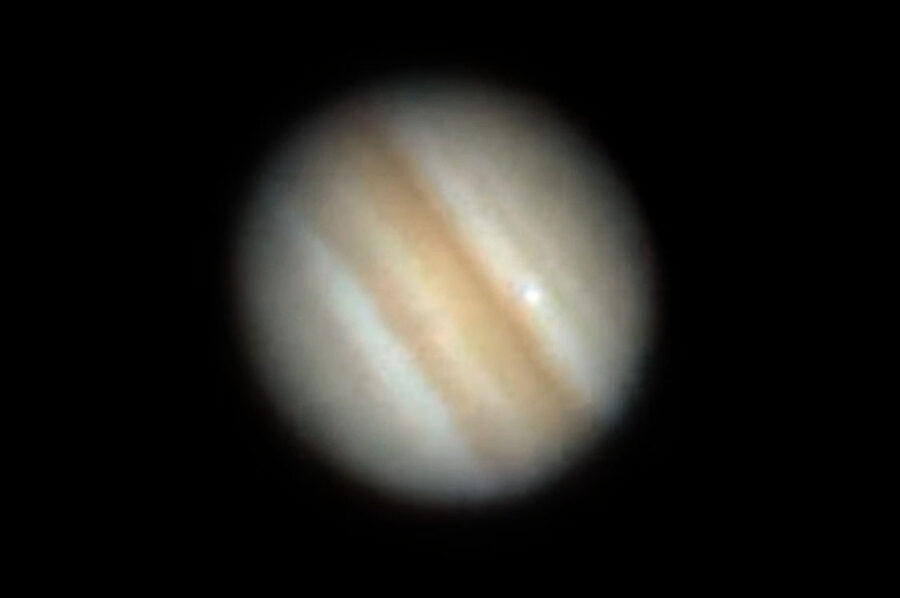
yotsuyubi21
Get your scorecards out — Jupiter just took another interplanetary hit. If it's confirmed it would be the 11th observed comet or asteroid strike at the gas giant since the pieces of Comet Shoemaker-Levy 9 slammed into Jupiter in 1994.
A little more than a month after five amateurs independently recorded a similar flash, a team of astronomers, led by Ko Arimatsu of Kyoto University, captured this most recent flare in Jupiter's cloud tops (IR/visible image below) at 13:24 UT on Friday, October 15th.
yotsuyubi21
Arimatsu and the group used a surveillance system called PONCOTS as part of the Organized Autotelescopes for Serendipitous Event Survey (OASES) project to make their discovery. The event occurred in Jupiter's North Tropical Zone near the southern edge of the North Temperate Belt at latitude +20° North and longitude 201° (System II). From the video, the burst lasted about 4 seconds. It quickly rises into visibility, maintains a steady light for about 2 seconds and then swiftly disappears.
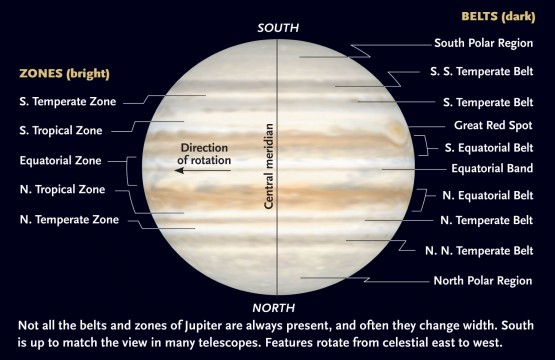
Sky & Telescope illustration
According to the Europlanet Society, on average 6½ objects 10 meters across and larger (that is, big enough for amateurs to record) hit Jupiter each year. Aided by transient-alert software like DeTeCt, we've seen a steady uptick in the number of impacts in recent years, proving that the more we look, the more we see. The most recent impact, in September, didn't produce a visible impact scar. This one may not either. But both events make us keenly aware of the potential hazards that still lurk in our solar system.
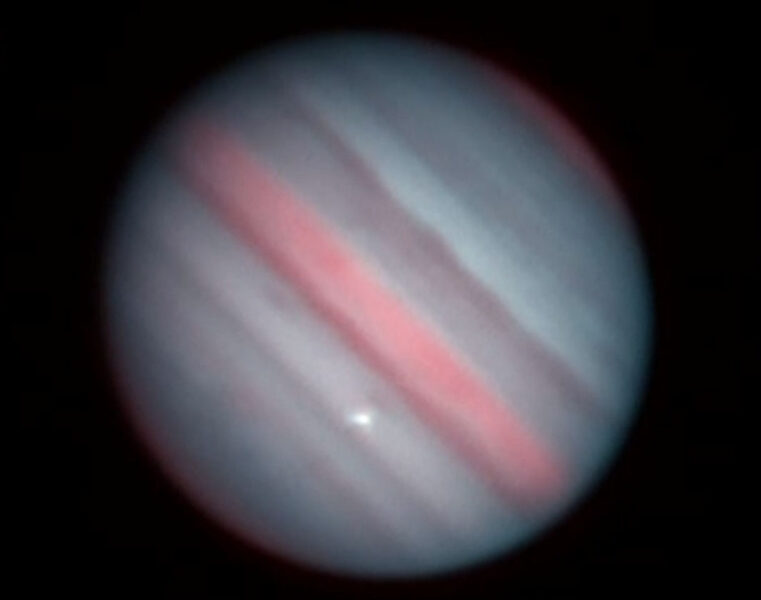
Ko Arimatsu / Kyoto University
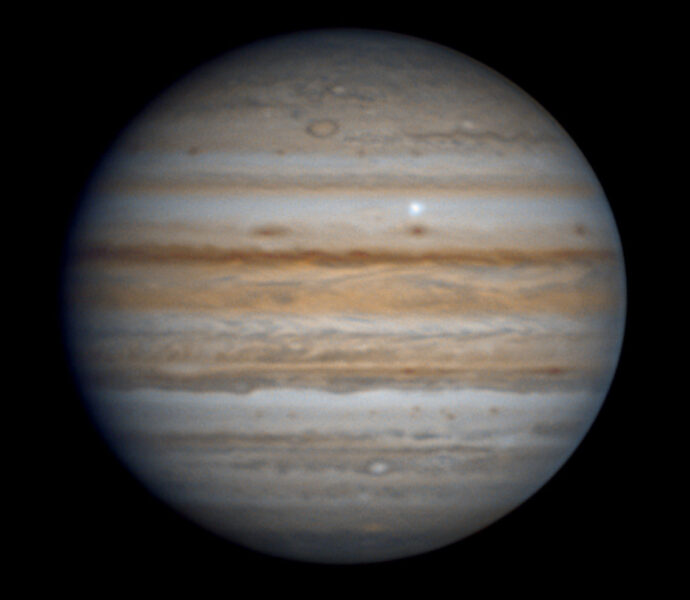
Victor PS Ang
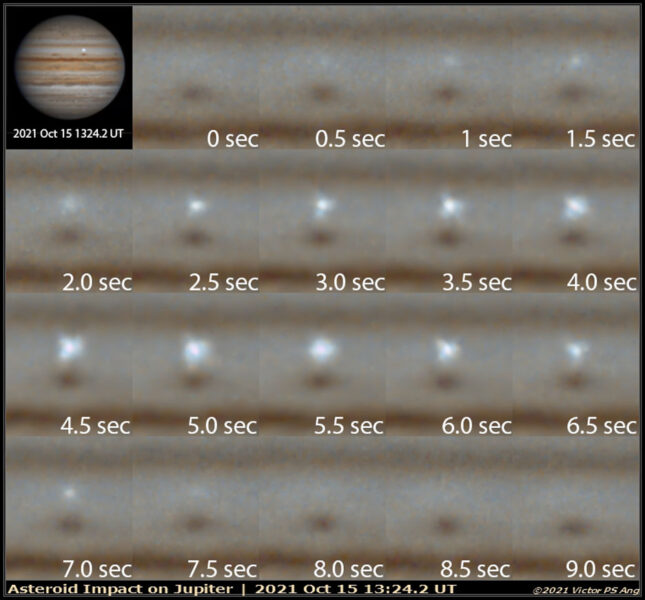
Victor PS Ang
Amateurs who photographed and took video of the Jupiter around the time of the potential impact are urged to contact either Marc Delcroix or Ricardo Hueso to provide confirmation of the event. Let us here at Sky & Telescope know, too! Just leave a comment, and I'll make sure to contact you.
** Update October 19, 2021 — Good news! The flash was confirmed by a second observer, Japanese amateur astronomer yotsuyubi21, who prefers to go by their Twitter handle.
** Update October 28, 2021 — Victor PS of Ang of Singapore also confirmed the impact flash (see photos above).
Editorial note: This article has been updated to attribute the infrared/visible observation to Ko Arimatsu (Kyoto University) and the visible-light video to Twitter user yotsuyubi21.
 2
2










Comments
Victor PS Ang
October 26, 2021 at 2:58 pm
Hi, I was also lucky to capture this impact even. Arkansas Sky Observatories has just announced the news in facebook post.
https://www.facebook.com/groups/421163751426836/permalink/1825072731035924/
I can send the processed images and video to you if you are interested.
You must be logged in to post a comment.
Bob KingPost Author
October 26, 2021 at 5:18 pm
Dear Victor,
Congratulations! This is an excellent image! Yes, please send to my email. I'll contact you shortly.
You must be logged in to post a comment.
You must be logged in to post a comment.